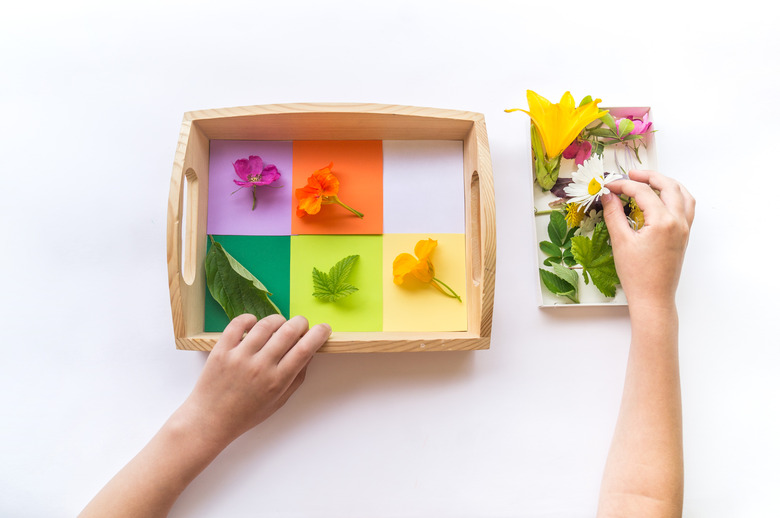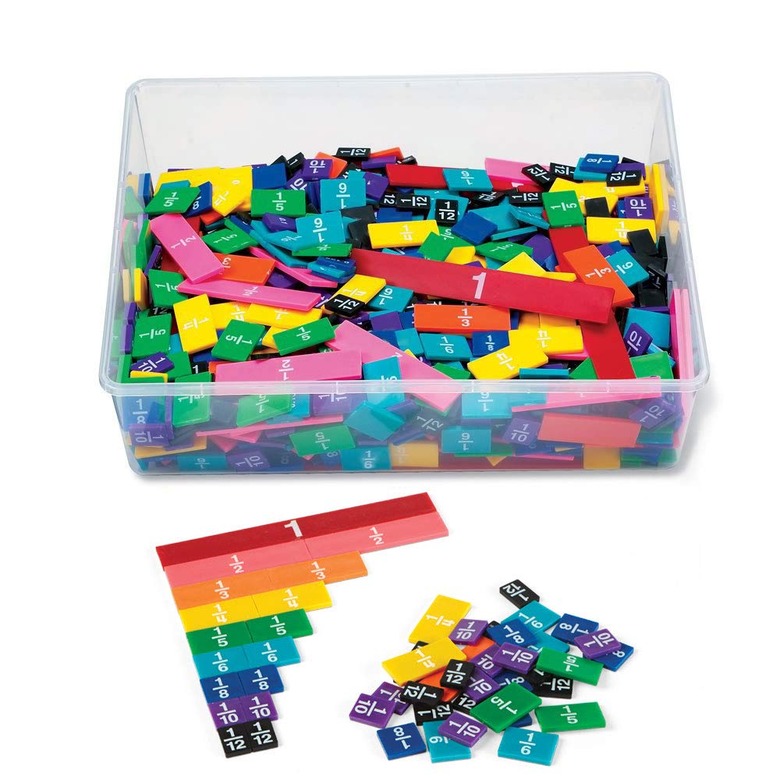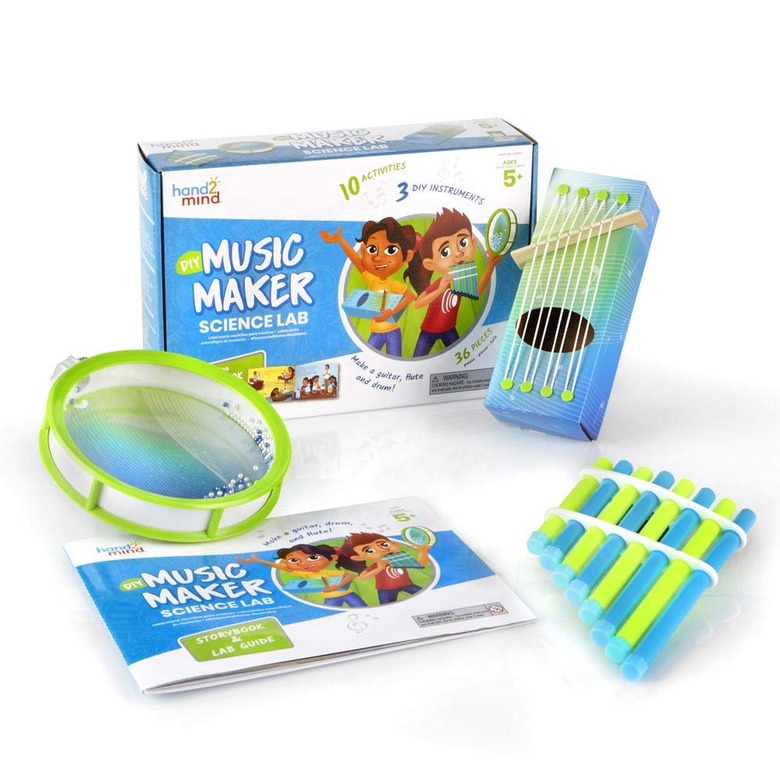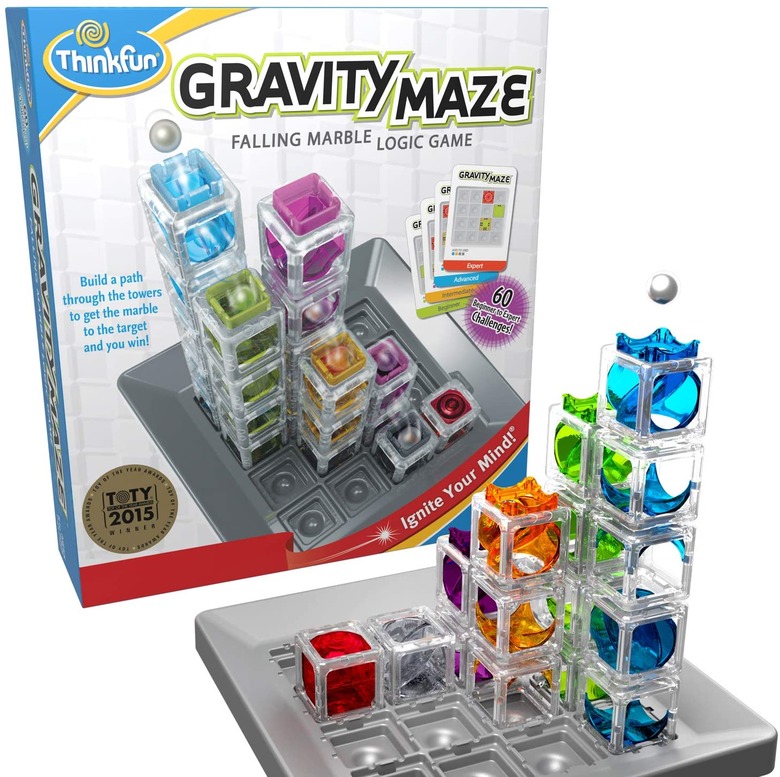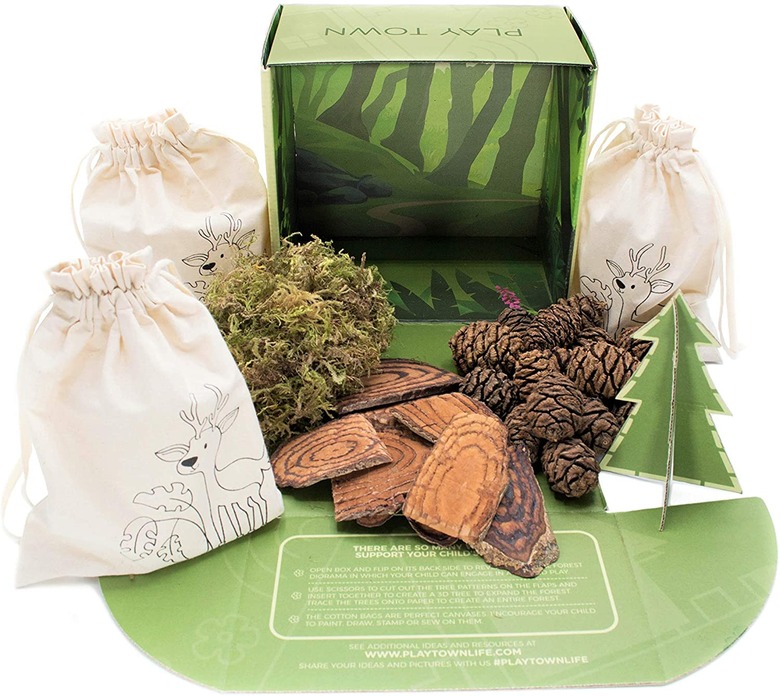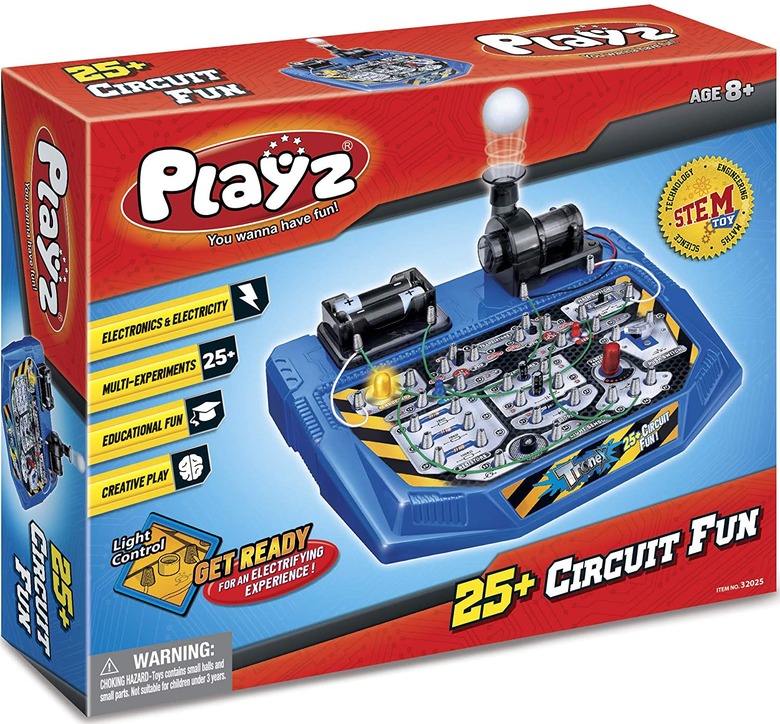Montessori-Inspired Toys & Kits For Your Little Scientist
We may receive a commission on purchases made from links.
Sciencing may earn compensation through affiliate links in this article.
The Montessori approach to teaching has a lot of merit: Teaching your child to learn independently, follow their passions and connect their classroom lessons with the world around them nurtures lifelong learning.
And, naturally, if your child has an aptitude for science – or they're just interested in the workings of the world around them – you'll want to encourage and support learning far beyond the classroom.
Picking up a science kit or two that caters to your child's interests is a great way to do that. Not only are they learning hands-on skills that will help them in the years to come, but they'll learn about the applications of their science lessons in the real world – in other words, why they should care about what they learn in science class, and how those principles play out in real life.
So read on for some suggestions on bringing Montessori science learning home, and get ready for plenty of practical science exploration with your kids.
For the Visual Learner: Fraction Tile Kit
For the Visual Learner: Fraction Tile Kit
Of all the sciences, math can be one of the harder disciplines for young learners to visualize. So use a fraction tile kit to give your young scientist hands-on learning experience, and a practical look at how fractions work.
It's easy with this US&ref=as_li_ss_tl'>plastic rainbow fraction tiles kit, suitable for grades 4 to 6. Different-sized and -colored tiles – representing halves, quarters, sixths, eighths, twelfths and a whole – let learners mix and match to see how fractions work. The tiles can help learners spot that two halves make a whole (or that 2-eighths make a quarter), for instance, to make fractions easier to understand.
It's especially great for visual and tactile learners, and can help your child "visualize" the math so they can more easily translate it to writing – and perform better on written tests.
For the Artist: Music Maker Science Kit
For the Artist: Music Maker Science Kit
Most schools separate art and science classes – but this US&ref=as_li_ss_tl'>music maker science kit shows there's plenty of overlap between the two. The kit allows your child to make their own instruments, and gives you an opportunity to show how physics affects how music sounds.
Take the hand drum you can create with the kit. As your child bangs the drum, ask them to look closely for vibrations on its head. Those vibrations "push" the air around them, creating sound. They can learn a similar lesson from the DIY string instrument, observing how the rubber "strings" produce musical notes.
And if you've got a future musical genius on your hands – or your child is a little too old for the music kit? Try out this US&ref=as_li_ss_tl'>build-your-own music machine kit, where they can use basic physics and engineering concepts to make their own xylophone.
For the Problem-Solver: Marble Run Logic Puzzle Kit
For the Problem-Solver: Marble Run Logic Puzzle Kit
Science is all about conceptual thinking and problem solving – and what better way to help your young scientist refine those skills than with this US&ref=as_li_ss_tl'>marble run logic puzzle kit?
The concept's simple: Use puzzle pieces to create a path that allows the marble to travel from point A to point B. The kit comes with 60 challenge cards that dictate where you can place the pieces, and it's up to your young scientist to find the pieces that'll create a continuous path for the marble.
This one's a great kit for ages 4 and up, because the challenges range from easy – plenty of pieces allowed to create a path – to expert, which requires creating a path with just a few pieces.
It's ideal for tactile learners, and offers a new challenge for learners interested in math and physics.
For the Nature-Lover: Nature Treasures Sensory Kit
For the Nature-Lover: Nature Treasures Sensory Kit
Raising a young scientist with a love for nature? Introduce your preschooler or kindergarten student to the natural world with this experiential-focused US&ref=as_li_ss_tl'>nature treasures science kit.
Each kit comes with canvas bags filled with samples from nature: Sphagnum moss, butterfly bark pieces and pinecones. Your little one can study each object up close and learn some basic science lessons. Teach them, for example, that pinecones secretly house seeds and that rough tree bark forms a protective "skin" for trees.
Because each sample is truly from nature – but cleaned of any potentially harmful insects, microbes or dirt – learners can experience the texture and scent of nature without putting themselves at risk. And after they've played with the kit, schedule a nature walk so they can see examples of bark, pinecones and moss in real life.
PS: This kit doubles as the starting materials for a diorama, complete with cardboard cutout trees. Pick up a US&ref=as_li_ss_tl'>set of animal figurines and your child can make their own "forest" at home.
For the Engineering Genius: Electrical Circuit Kit
For the Engineering Genius: Electrical Circuit Kit
Math, physics and engineering are seen by some as more "theoretical" branches of science – but that doesn't mean your child can't take a hands-on approach to learning. And this US&ref=as_li_ss_tl'>electrical circuit science kit will allow them to create a real working circuit – one that actually powers a lightbulb.
With this kit, your kids gain insight into how electronics work, and can use their homemade circuit to create light, sound and more. They can even use it to make a working AM/FM radio, and over 20 other experiments included in the kit.
So pick this kit up for your math-inclined learner; who knows, you may be raising the next Elon Musk!
Cite This Article
MLA
Tremblay, Sylvie. "Montessori-Inspired Toys & Kits For Your Little Scientist" sciencing.com, https://www.sciencing.com/montessori-inspired-toys-kits-for-your-little-scientist-13763820/. 31 March 2021.
APA
Tremblay, Sylvie. (2021, March 31). Montessori-Inspired Toys & Kits For Your Little Scientist. sciencing.com. Retrieved from https://www.sciencing.com/montessori-inspired-toys-kits-for-your-little-scientist-13763820/
Chicago
Tremblay, Sylvie. Montessori-Inspired Toys & Kits For Your Little Scientist last modified August 30, 2022. https://www.sciencing.com/montessori-inspired-toys-kits-for-your-little-scientist-13763820/
